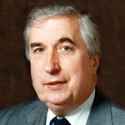Elon Musk came close to doing something truly unique. No, not his electric car. Rather, he was about to roll the dice with his shareholders’ equity.
Securities analysts estimate that somewhere between 25 and 35 percent of the value of Tesla would be sacrificed if Musk were no longer its CEO. No one else in Tesla’s management can credibly run the company, and Musk alone appears to be the visionary that can maintain its technological superiority. Yet, he placed this value at risk by rejecting a relatively generous (even soft) settlement offered by the SEC to resolve his notorious tweet on August 7 (in which he announced a proposal to take Tesla private and stated, “funding secured”). After a relatively speedy investigation, the SEC offered him its traditional “neither admit nor deny” settlement; thus, the settlement would not have had any evidentiary significance or entitled private plaintiffs in securities class actions to assert collateral estoppel. All that Musk had to do was give up his position as Tesla’s chairman for two years (while retaining his post as chief executive officer) and accept two new independent directors on Tesla’s board. In short, this settlement should have been a no-brainer for him.
But, impulsive as always, Musk rejected this settlement, apparently because the SEC insisted (as it always has) that he could not proclaim his innocence, despite having settled. In response, a very surprised SEC showed that it could not be trifled with in this fashion. Moving quickly, it brought suit that same day in the Southern District of New York—a forum very distant from Tesla’s home and very favorable to the SEC (also one where juries regularly convict white collar defendants). More important, the SEC amended its complaint to seek an order from the court barring Musk from serving as an officer or director of a public corporation.[1]
At this point, Musk was now rolling the dice with the shareholders’ equity. That is, if he lost, shareholders could see 30 percent (or more) of their equity suddenly disappear. If he won, he could continue to proclaim his innocence, but shareholders would bear the considerable expense of the legal proceedings (through indemnification and insurance). Viewed this way, this was an extraordinary asymmetry. “Heads, I win,” and Musk’s reputation is saved (except to the extent that he still would look like a reckless gambler). “Tails, I lose,” and Musk is potentially barred from corporate office, while his shareholders suffer a devastating decline in Tesla’s stock price. Over the weekend, Musk eventually recognized that this was a fool’s wager and relented. A relieved SEC (which must have feared imposing a penalty that indirectly fell on the shareholders) allowed him to reclaim much of the original proposed settlement (except now with a three year ban on his serving as chairman of Tesla).
What do we learn from all this? Most obviously, do not mess with or embarrass the SEC, which has powerful weapons at its disposal. More important, one large unanswered question remains: Where was Tesla’s board in all this? The only answer is: missing in action! Indeed, it publicly stood behind Musk, expressing its support on Thursday, while he placed at risk a large percentage of Tesla’s value for no good reason (other than to avoid personal embarrassment). In overview, the episode reveals a major corporate governance failure, because Tesla remained passive even though it would experience devastating costs on a defeat. Functionally, this was a new and novel form of self-dealing because the gains to Musk would come only by exposing Tesla to the dire threat of defeat.
As it turned out, Musk escaped most of the costs of his self-inflicted injury. Still, for the future, two linked conclusions seem obvious: (1) Tesla needs a stronger, more independent board, and (2) Musk needs adult supervision. Some commentators believe the SEC should have sought an order denying Musk the ability to serve as CEO. But this view sees the SEC as uniquely committed to retribution (and, as the SEC recognized in its complaint, Musk was more reckless than willfully fraudulent). But the SEC can be criticized in one respect: It has not insisted that an outsider (possibly a Warren Buffet-like figure) be made chairman. The current Tesla board is an old boys club, and none of Musk’s buddies can hold him accountable. Indeed, asking any of them to monitor Musk is a little like asking Mark Judge to supervise Brett Kavanaugh. A lot of good that will do! Without a strong monitor, our reckless entrepreneur will predictably fall victim again to his impulses.
ENDNOTE
[1] Section 21(d) of the Securities Exchange Act of 1934 permits a court in its discretion to impose such a bar order. See 15 U.S.C. §78m(d). Such an order has been regularly granted in cases involving egregious misbehavior (such as insider trading) where the defendant receives ill-gotten gains at the expense of the other shareholders. Recent examples would include the CEO of Enron (Skilling, who received a lifetime bar), Elizabeth Holmes at Theranos (who agreed to a 10 year bar order), and Martha Stewart (who settled for a five year bar). Musk, of course, does not appear to have personally received any ill-gotten gains, and thus, but for his decision to provoke the SEC, would not have been subjected to a bar order under ordinary circumstances.
This post comes to us from John C. Coffee, Jr., the Adolf A. Berle Professor of Law at Columbia University Law School and Director of its Center on Corporate Governance.
 Sky Blog
Sky Blog
